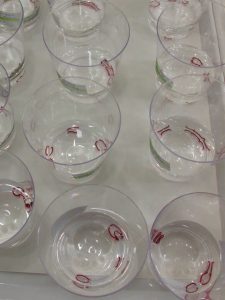In this post, Carsten Brühl informs about their recently published paper “Decreasing Bacillus thuringiensis israelensis sensitivity of Chironomus riparius larvae with age indicates potential environmental risk for mosquito control”.
Mosquito control is established at a global scale and along the Upper Rhine Valley in Germany a treatment scheme is in place for decades. Mosquito control based on the use of Bacillus thuringiensis israelensis (Bti) is regarded as an environmentally friendly method, because it efficiently kills mosquitos but has no lethal effects on other organisms. However, the closely related non-biting midges, present in high abundances and species numbers in wetlands, are also Bti-sensitive. Midges represent central food sources in wetland food webs due to their high biomass and protein content. Their larvae are eaten by other aquatic insects and fish; the emerging adults represent food for birds, bats or dragonflies.
We studied the sensitivity of the midge Chironomus riparius towards Bti concentrations following their entire life cycle including four larval stages. Until now only data for older larval stages were available, and generally, a higher sensitivity of younger, smaller larvae is assumed.
The results show that the youngest larvae are up to 100 times more sensitive than the older larvae. Their sensitivity was more than 200 times below the lowest field application concentration used in mosquito control in the Upper Rhine Valley. Using the new data of the most sensitive larval stage together with the lowest resulting Bti field concentration indicates the exceedance of a risk threshold factor used in biocide regulation by three orders of magnitude. The sensitivity of midges towards Bti and their possible large scale reduction in treated areas might violate nature protection goals.
Moreover, based on these results, a potential risk for other animal groups via food web effects in treated conservation areas cannot be excluded. Bti is used multiple times per year in the Upper Rhine Valley in nature conservation areas of European value. However, a solid evaluation of possible Bti food web effects in the Upper Rhine Valley is difficult, since there is no long-term monitoring with control areas established.
The paper authored by Anna Kästel, Stefanie Allgeier and Carsten A. Brühl was published in Nature Scientific Reports.


